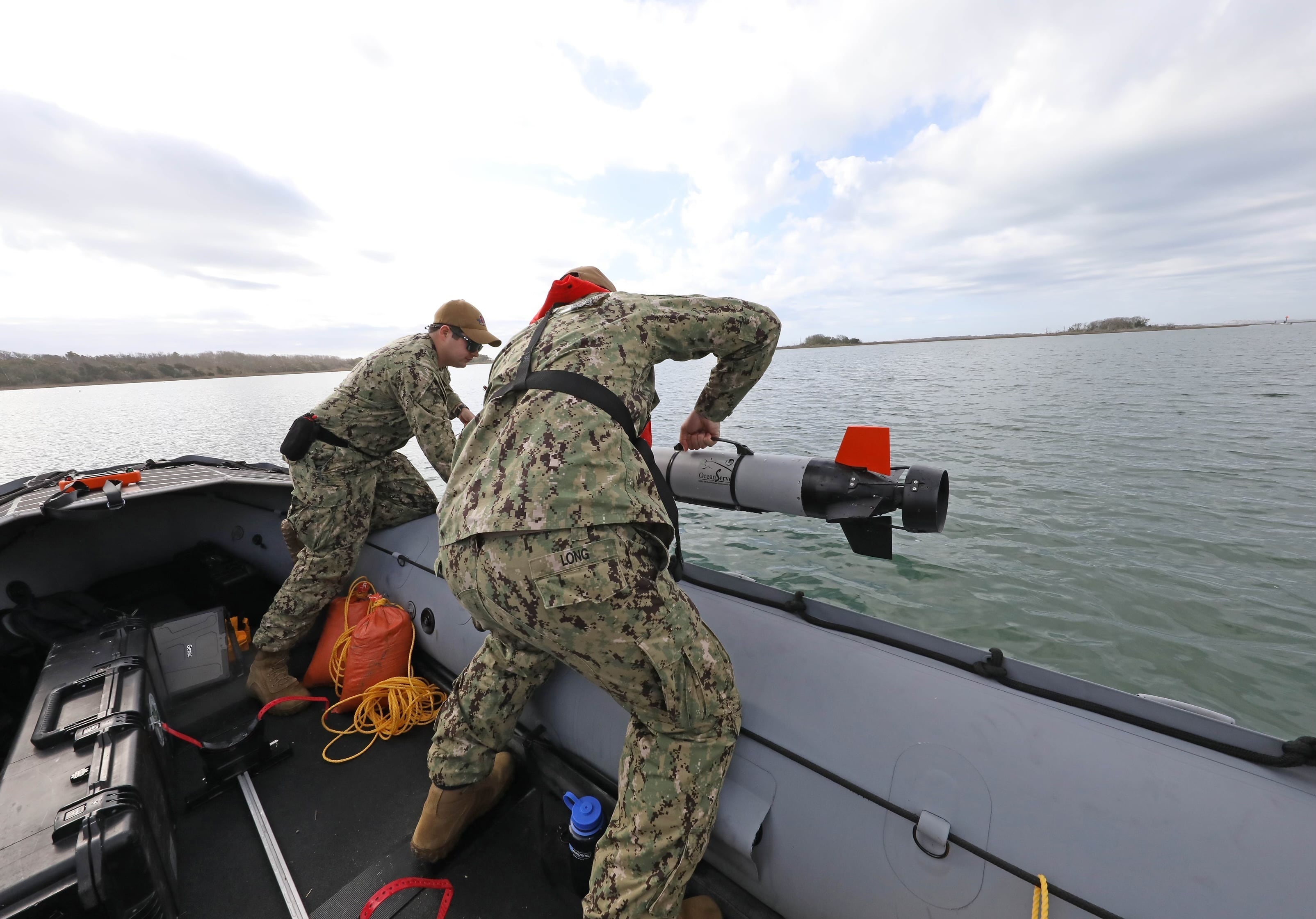The Navy and the Marine Corps are teaming up to streamline command and control of amphibious and crisis response elements in Indo-Pacific, creating a new task force that will experiment with new maritime concepts and technologies.
Task Force 76/3 blends the staff of the Navy’s Expeditionary Strike Group 7 and the 3rd Marine Expeditionary Brigade ahead of a year-plus campaign to understand what future naval operations in the Pacific ought to look like.
The move is similar to the 2016 creation of an integrated staff in U.S. Central Command and the standup this spring of Task Force 61 Naval Amphibious Forces Europe/2nd Marine Division to consolidate Blue-Green forces in Europe for amphibious operations and reconnaissance/counter-reconnaissance exercises.
“Merging the two staffs simply makes sense. It’s an idea that’s really well-suited to this region,” Rear Adm. Derek Trinque, commander of Task Force 76/3, said in a Navy news release. “A command that is truly a Navy and Marine Corps team provides the most capable and most ready force to commanders in the key maritime terrain of the Indo-Pacific.”
Task Force 76/3 aims to better prepare forces for the full scope of operations, from humanitarian and disaster response to high intensity conflict, according to Trinque and Marine Corps Brig. Gen. Fridrik Fridriksson, Task Force 76/3 deputy commander.
“We can position things correctly, we can position things smartly, and also we can very quickly integrate from the ships to the shore and back again, monitor aircraft, all those types of things,” Fridriksson told reporters Monday. “So, this is one of the experimentations that they’ve asked us to do.”
RELATED

Previously, though Expeditionary Strike Group 7 and 3rd Marine Expeditionary Brigade would deploy together at sea, they had separate staffs: separate operations planners, separate intelligence divisions, separate logistics streams, separate communications and IT divisions and more.
Now, rather than the Navy having an N staff and the Marines having a G staff, the combined L staffs — L for littoral operations — will leverage the best personnel and practices from each service.
“Where we would look at things differently and perhaps send reports up two separate chains of command, we’re now pooling those talents and using the information and the intelligence gains better,” Trinque told reporters.
Navy and Marine leadership in the Pacific wanted to ensure the team is considering everything — “whether it’s communication systems, whether it’s logistics systems, whether it’s operational, whether it’s all the new weapons and technology — how we’re employing these … in such a way that we can fully demonstrate the power of this integrated task force,” Fridriksson said.
The task force will have an opportunity to test out some of these naval integration concepts for the first time Oct. 1 as part of exercise Noble Fusion 22.2. Additionally, the task force will take part in Exercise KAMANDAG near the Philippines Oct. 3 to support the 3rd Marine Division, as well as other exercises throughout the fall and real-world operations as they emerge.
“The exercises are where we can put a lot of forethought into this and plan it out,” Trinque told reporters. But, “certainly, if a real-world operation happens, we are not going to just come apart and go at things separately. We are together. We’re going to stay together throughout this campaign. And in the end, we’re going to have a more integrated naval force.”
The task force trial period is expected to last through summer 2023. Afterward, senior Navy, Marine Corps and defense leaders will receive feedback on lessons learned from the task force and how to proceed.
The creation of the task force is not in response to any current events, but rather aligns with instruction from Secretary of the Navy Carlos del Toro and Chief of Naval Operations Adm. Michael Gilday for the Navy and the Marine Corps to facilitate readiness and integration of forces, Trinque and Fridriksson said.
“The Navy-Marine Corps team has so many different capabilities,” Trinque told reporters. “And so we can’t afford to have a long lag time to be able to use those capabilities, whether we’re talking about humanitarian assistance and disaster response all the way up to major combat operations. It’s our responsibility to be ready, and be ready when our bosses need us for something.”
In that vein, the team stood up an Integrated Littoral Warfare Center as an ashore command-and-control hub. Trinque, Fridriksson and their staff will have the command and control and the communications systems established there to effectively monitor the region and employ forces as needed.
The Japan-based Expeditionary Strike Group 7 has staff in White Beach, Okinawa, and in Sasebo, and includes Amphibious Squadron 11 along with 7th Fleet’s flagship, amphibious command ship Blue Ridge.
The 3rd Marine Expeditionary Brigade, headquartered at Camp Courtney in Okinawa, consists of air and ground elements that provide crisis response in the Pacific.
Megan Eckstein is the naval warfare reporter at Defense News. She has covered military news since 2009, with a focus on U.S. Navy and Marine Corps operations, acquisition programs and budgets. She has reported from four geographic fleets and is happiest when she’s filing stories from a ship. Megan is a University of Maryland alumna.








